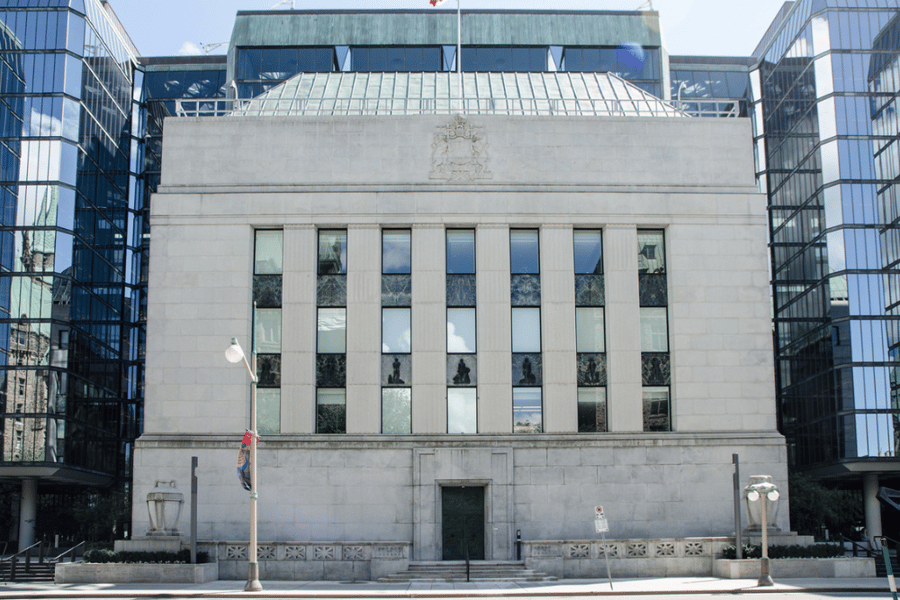When do they think a policy adjustment will take place?

The Bank of Canada’s recent decision to maintain its interest rate at 5% for the fifth consecutive time has sparked a debate among economists regarding the timing of potential rate cuts.
During a press conference following the announcement, Governor Tiff Macklem emphasized that it’s premature to discuss lowering the policy rate, pointing to persistent inflationary pressures as a significant concern. Despite January’s headline inflation softening to 2.9%, core inflation remains stubbornly above 3%, with many items in the consumer price index still experiencing higher-than-average price increases.
“The council is still concerned about risks to the outlook for inflation, particularly the persistence in underlying inflation,” BoC said in a statement.
This cautious stance has led to a recalibration of expectations in financial markets, with predictions for a rate cut shifting from June to July, as most economists had anticipated. However, some analysts believe even this revised forecast may be too optimistic.
Laurentian Bank’s Sebastien Lavoie and Salim Zanzana also argue that upcoming inflation data for February and March are unlikely to show the significant cooling needed to prompt a June rate cut. They note that while overall inflation could drop to 2.5% by April, core inflation may not decrease sufficiently for the central bank to act as soon as June.
Read next: Bank of Canada still likely to cut rates in June: CIBC’s Tal
Further complicating matters, the BoC’s February business survey indicated an increase in the number of companies planning to raise prices in early 2024, potentially stalling progress towards more normalized pricing behavior. As a result, Lavoie and Zanzana suggest that a policy rate cut in July or September might be more appropriate, given current economic conditions and the risk of misjudging monetary policy adjustments.
Moreover, the pace at which rates could be reduced later in the year might be slower than some have predicted, with a potential decrease of 75 basis points instead of the 125 basis points forecasted by some analysts. Macklem himself cautioned that rates would not be lowered as quickly as they were raised, reinforcing the central bank’s cautious approach.
Derek Holt, from the Bank of Nova Scotia, echoed these sentiments, suggesting no rate cut is likely until September, contingent on a series of favourable economic developments. The bank’s latest statement suggests a central bank not yet ready to ease monetary policy, as noted by Holt.
“The opening remarks continued to flag that ‘underlying price pressures persist’ and Governing Council is ‘concerned about the persistence of underlying inflation’ amid ongoing ‘upside risks to inflation.’ Macklem said ‘Looking ahead, we continue to expect inflation will be close to 3% through the middle of the year before easing in the second half,” Holt said.
“None of that is the language of a central bank moving toward easing anytime soon.”
Make sure to get all the latest news to your inbox on Canada’s mortgage and housing markets by signing up for our free daily newsletter here.



